[ad_1]
The ranking in Google is the same for everyone (or at least very comparable). That’s why it’s essential to have an SEO plan template that you can use again and again.
So… we made one for you.
Looking for a different format? Request it here.
It gives you a proven SEO plan based on how we do things here at Ahrefs. And because it’s a template, it’s repeatable. Just go through it for each new page you create.
Our template is also:
- Easy to follow (each step has clear instructions).
- Easy to outsource (send it to an employee, freelancer or VA).
- Interactive (complete each section as you go).
Our template covers four broad areas:
- Finding the right keyword
- Create and optimize content
- Building connections
- Track results
Follow the steps below or watch the video walkthrough.
1. Enter keyword ideas
Keywords are the words and phrases that people type into Google to find what they are looking for. Unless you’re targeting a keyword with some popularity, there’s no point in even being number one because you won’t get any traffic.
To find keywords worth targeting, you need to do keyword research.
If you are new to the process, start by entering a broad topic related to your industry into the Ahrefs program free keyword generator. It finds the top 100 keywords based on monthly search volume that contain your term.
For example, if you have a website about coffee, you could enter “coffee”:
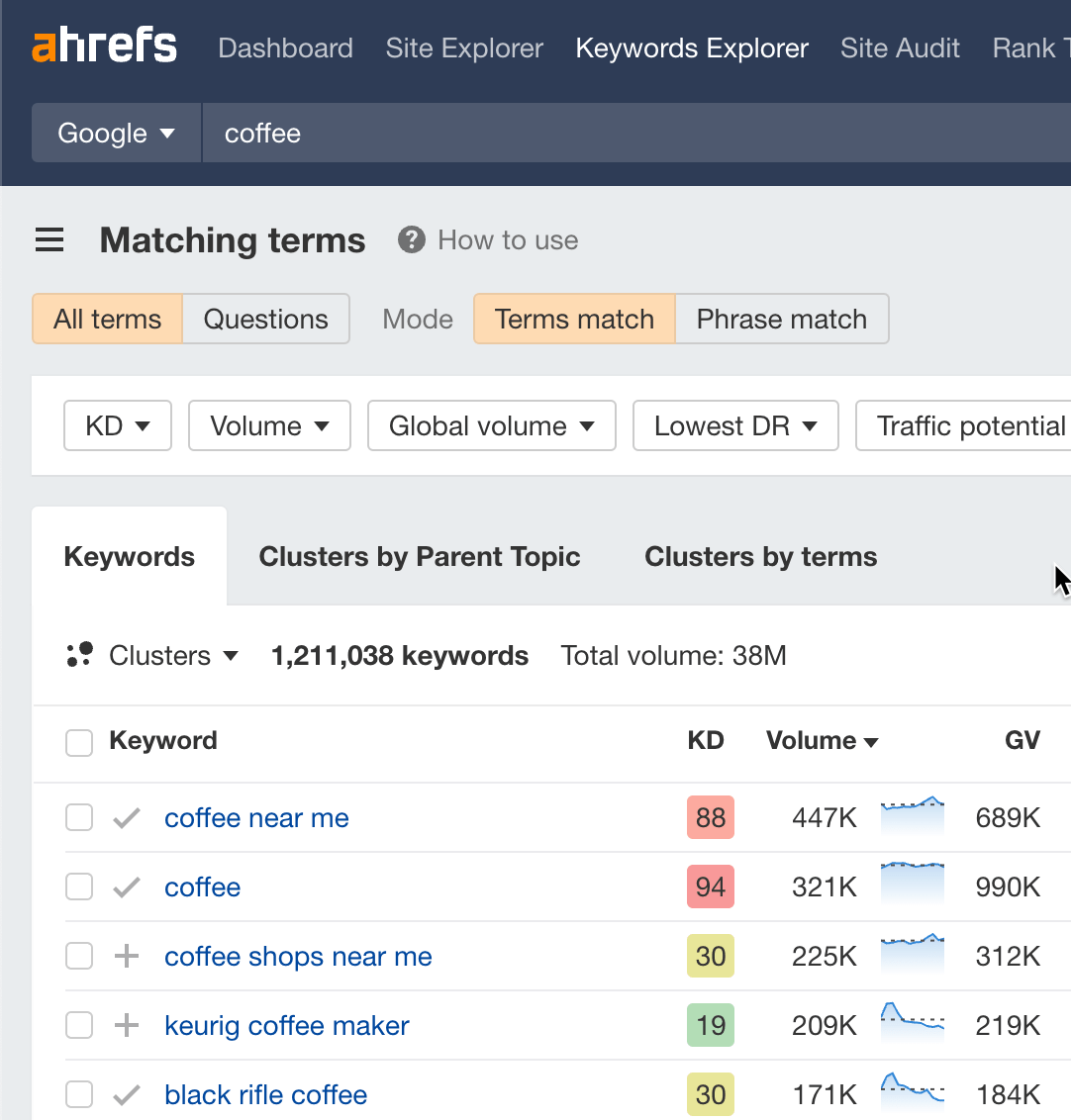
Choose five keywords from this list that might make sense for your business to target and include them in the template:


TIP: Consider the “business potential” of your keyword choices
“Business potential” is how easy it would be to pitch your product (or third-party products you’re promoting) while addressing a keyword. It is important to consider this because the purpose of ranking content in Google for most websites is to make money.
This is the scale we use to assess a keyword’s ‘business potential’:
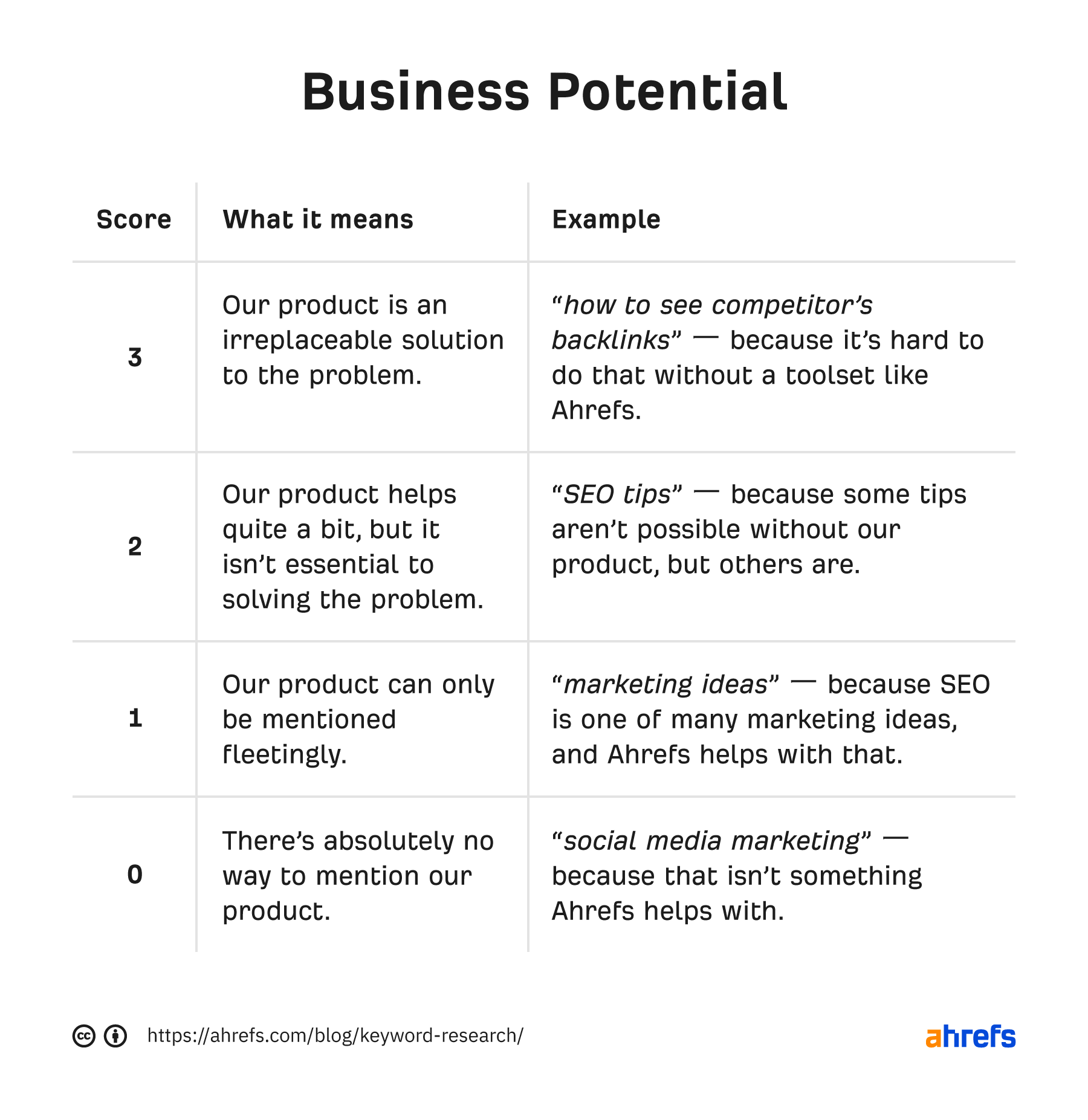

2. Capture search intent
Search intent is the reason behind the Google search. In other words: what is the searcher looking for? Unless you create content that matches search intent, you will struggle to rank for your target keyword.
How do you know what searchers are looking for? View the current top 10 search results. Content species And formats that you see here are usually a good indication of what people want.
These are the most common content types:
- Blog post
- Video
- Product page
- Category page
These are the most common content formats:
- Manuals
- Step-by-step tutorials
- Reviews
- Comparisons
- Lists
- Opinion pieces
For example, if we check the results for ‘best coffee makers’ in the US with Ahrefs’ free SERP checkerthey are almost all blog posts in the list format:
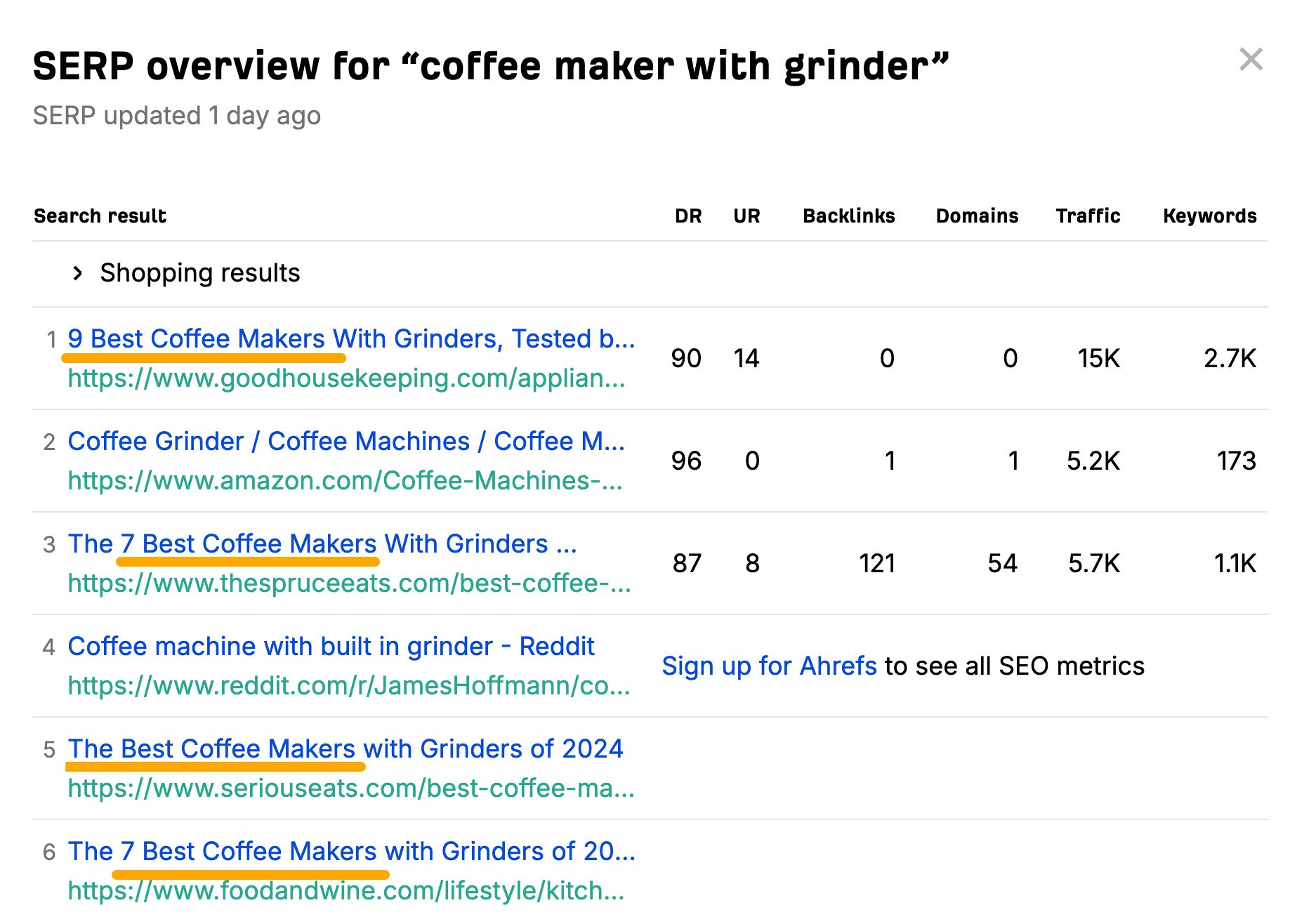

If we do the same for ‘coffee table with storage’, they are all product category pages from e-commerce stores:


Record the results for all five keywords in the template. If you’re not sure about a keyword, choose ‘not sure’.
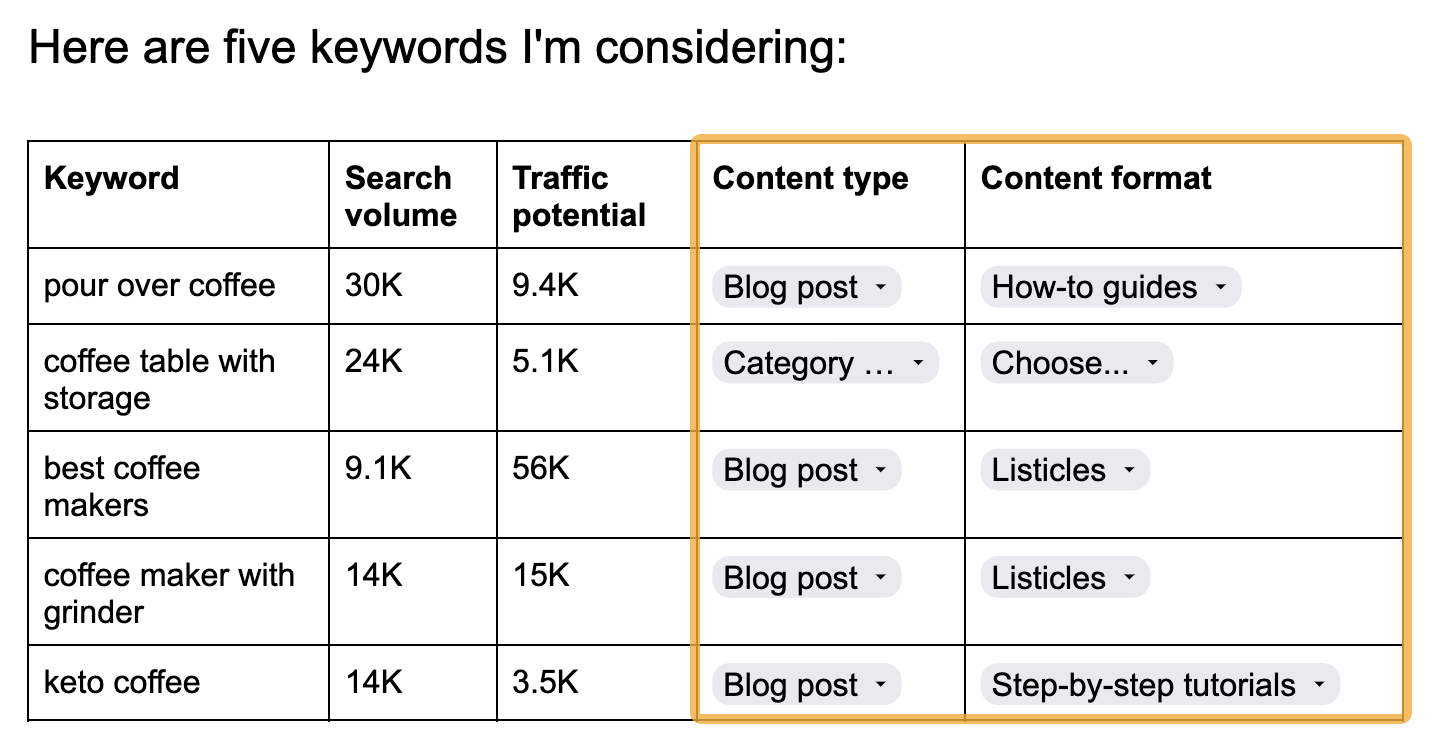

3. Choose the best keyword
For each of the five keywords on your list, ask yourself two questions:
- Can I create the type of content searchers are looking for?
- Would ranking that type of content be lucrative for my business?
Choose the keyword with the best balance of traffic and monetization potential and write it in the template.


If you’re having trouble answering the questions above, read the advice below.
Can I create the type of content searchers are looking for?
Let’s say you have a coffee blog and one of your keywords is “coffee table with storage.”
You’ll remember from above that all the top results were product category pages from online stores. So in this case, the answer to the question is “no,” because you cannot create this type of content on a blog.
However, the answer would be ‘yes’ for the keyword ‘coffee maker with grinder’ because all the top ranking results are blog posts.
Would ranking that type of content be lucrative for my business?
Let’s start with the coffee blog example…
If the keyword is “coffee maker with grinder,” the answer is “yes,” because searchers want a list of the best products. You can monetize your product recommendations affiliate marketing.
If the keyword is “how much caffeine in coffee,” the answer is “no,” because it would be difficult to recommend a product or service naturally in the content itself. People just want a quick answer.
4. Plan your content
It’s not enough to create the type and format of content people are looking for. You should also make sure that the most important subtopics are covered.
How do you know what these are? Look for similarities between the highest ranking pages.
For example, if we check the subheadings for the first two pages with the highest ranking for “best coffee makers” with Ahrefs’ SEO toolbarwe see that they both have sections on the best coffee makers And best pour-over coffee makers:


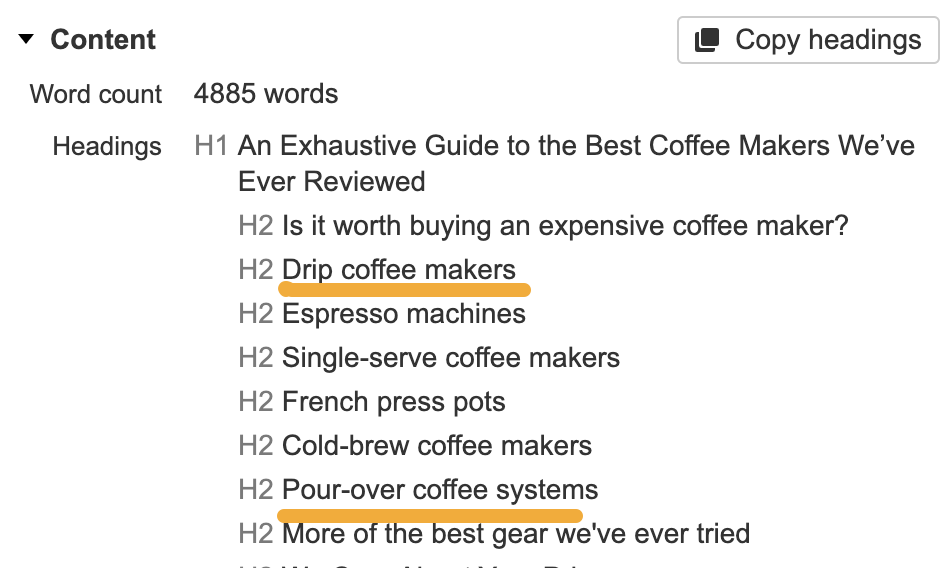

You would definitely want to talk about these three things if you were targeting the keyword “best coffee makers.”
If you are an Ahrefs user, you can find important subtopics more easily Keywords Explorer. Just enter your target keyword, go to the Related terms report and toggle to view keywords that the highest ranking pages “also rank for” in the “top 10”:
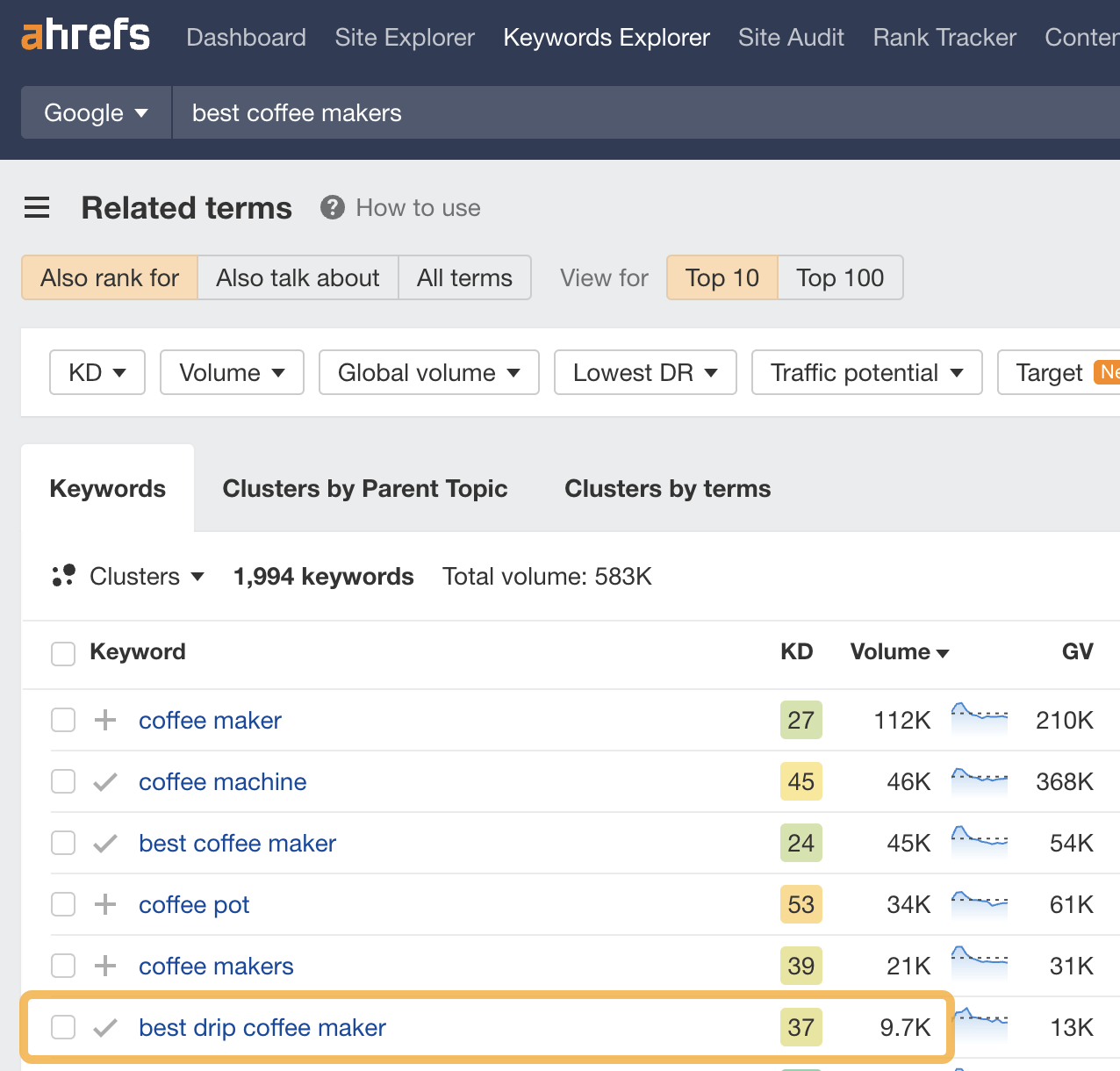

Search this list for keywords that seem to represent subtopics and write down the top 5 in the template:
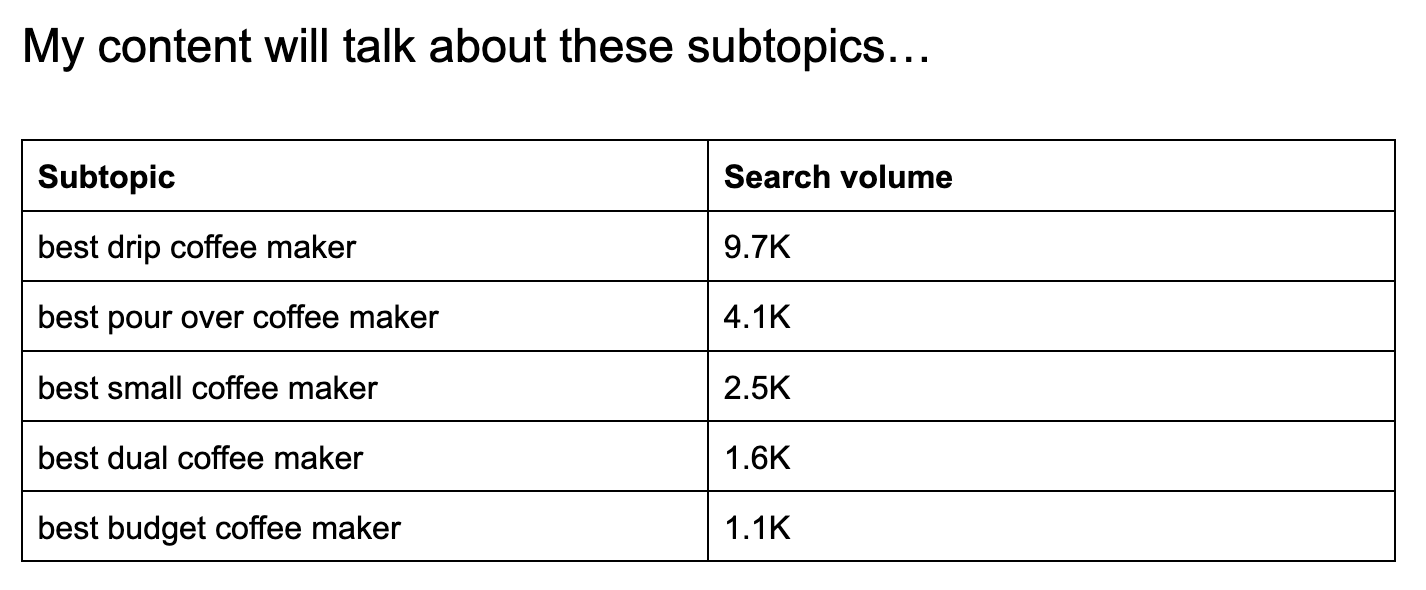

You also need to think about how to make your content unique and demonstrate expertise.
There are a few ideas in the template. Check all you plan to use, or add your own:
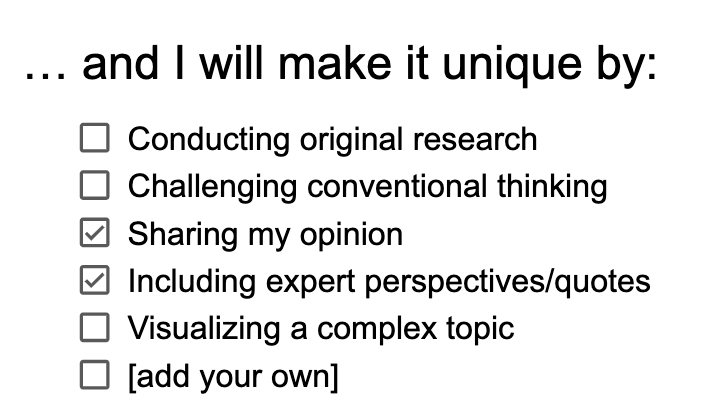

For example, indoors my guide to expert roundupsI’ve covered all the subtopics searchers would expect to see, such as what they are And why they are important. But I also shared my opinion that expert roundups aren’t worth it, as well as the results of a few Twitter polls I’ve done.
5. Publish and optimize your content
Most of the “optimization” happens during the content creation process. Still, there are a few things worth doing to ensure your content performs at its best.
Follow the checklist in the template:
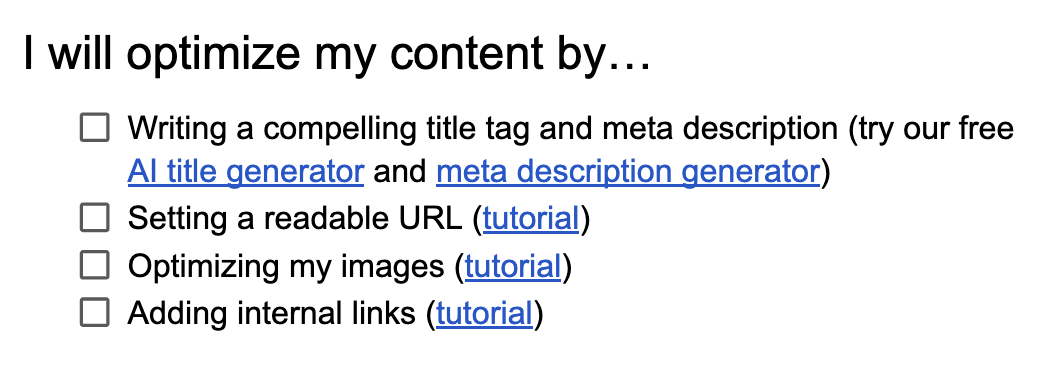

6. Plan link building efforts (if necessary)
Links are one of Google’s strongest ranking factors, so you’ll likely need to have some chance of ranking high for any remotely competitive keyword.
Unfortunately, it is possible to get them terribly challenging.
If you’re brand new to the whole thing, the easiest starting point is to pitch guest posts to a few sites in your industry. This is far from the trendiest tactic, but it works (probably why it’s the third most popular link building tactic according to this 2022 study).
Here’s an easy way to find sites to pitch with Ahrefs’ Content Explorer:
- Enter a broad keyword or phrase related to your niche
- Select ‘In Title’ from the drop-down menu
- Run the search
- Set your language to “English”
- Go to the ‘Websites’ tab
You’ll see a list of the top 100 websites with content on your topic, based on estimated search traffic:
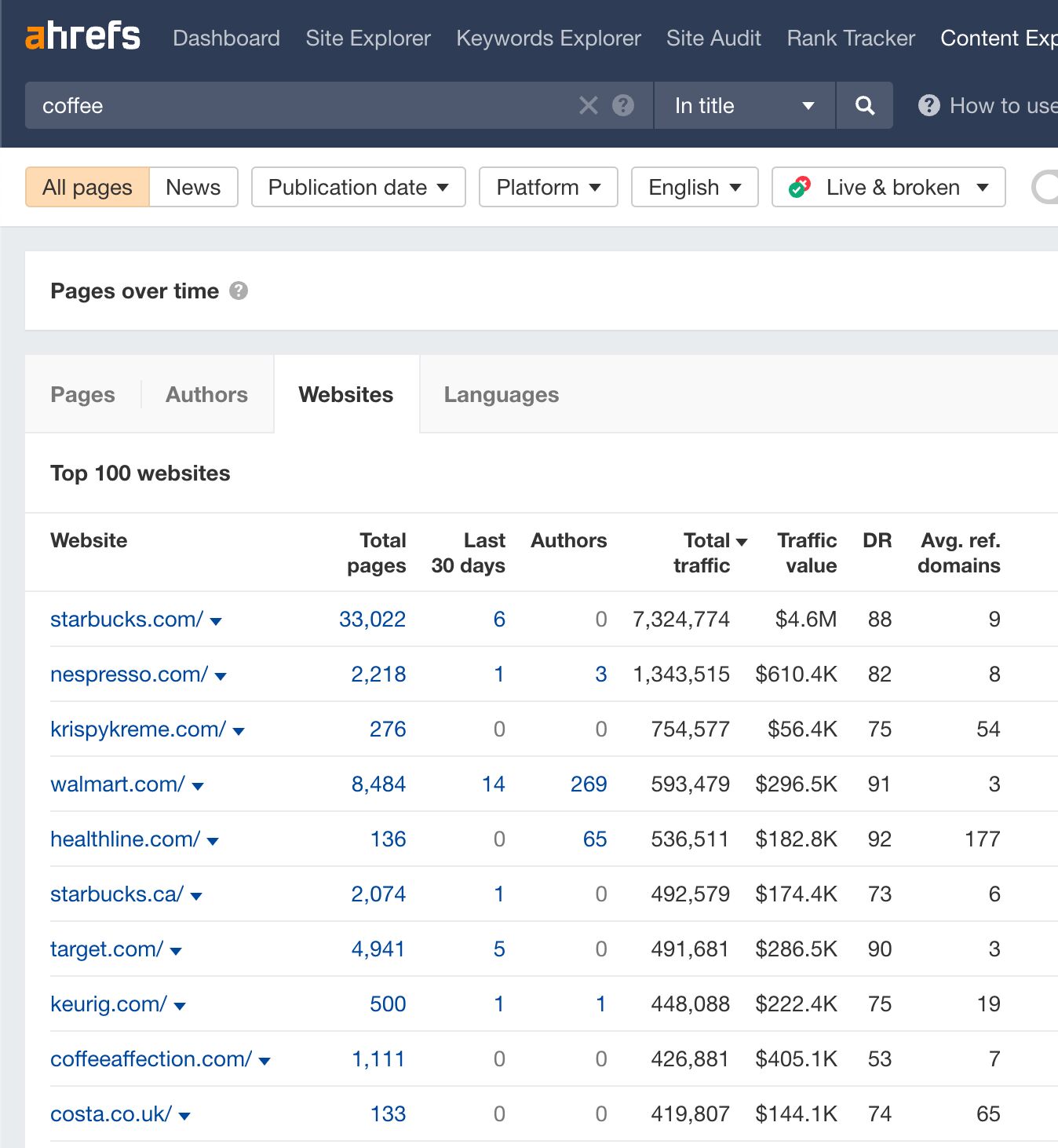

Stay tuned for blogs where you might be able to pitch a guest post.
For example, coffeeaffection.com is clearly a blog and receives an estimated 426,000 search visits monthly:


For each site you want to pitch, you’ll need to browse the site to find the right person to contact (usually the editor or owner, depending on the size of the site). If their email address is not on the site, you can use an email lookup tool such as Hunter to try to find it.
Write down the sites you want to pitch, who you want to contact, and their email addresses in the template:


7. Track your results
Google Search Console is a free way to track how your page is performing for your target keyword. Just go to the Search performance then report and filter by your URL and target keyword.
If you want to see actual ranking positions instead of averages (which is what most of us do), sign up for free Ahrefs Webmaster Tools (AWT) account, then go to the Organic keywords report in Site Explorer and filter by your target keyword. You should see the actual ranking position.
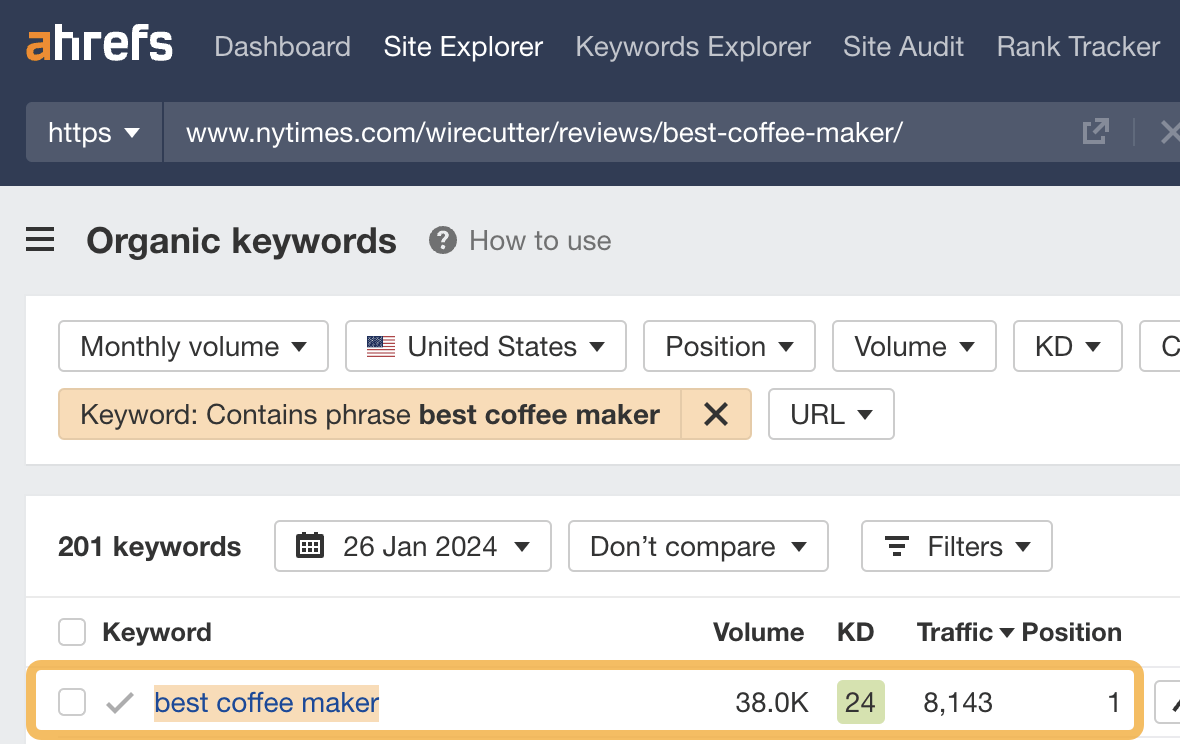

Anyway, don’t get too obsessed with rankings. Daily fluctuations are completely normal, so weekly checks are more than sufficient.
Both of the tools above show past data, but if you want to capture rankings for your records, you can do that in the template:


Ranking new pages is essential to SEO success, but it takes a lot of work. That is why we recommend conducting a content audit to find existing content that you might be able to easily improve the rankings for. These are often low-hanging fruit opportunities that require little effort.
Alternatively, if you already have an existing page in mind that you want to improve SEO for, read this article our step-by-step guide to ranking higher on Google.
[ad_2]



